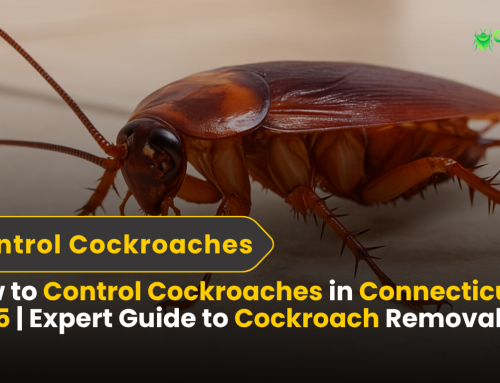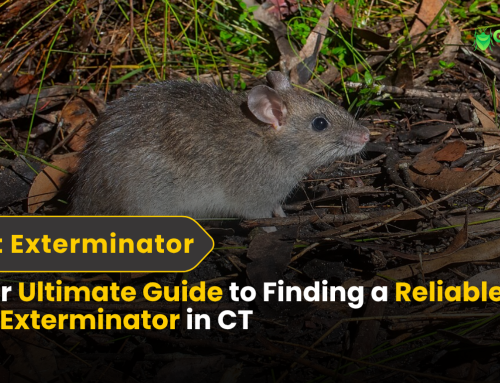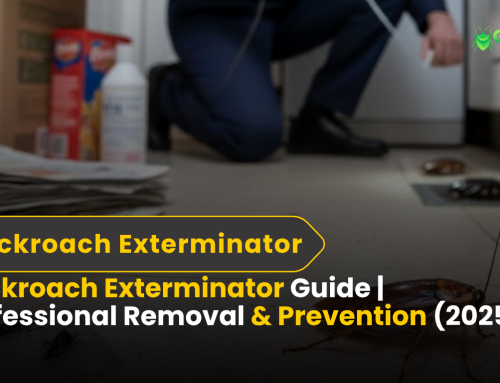How to Get Rid of Centipedes Naturally and Effectively
Centipedes, with their long, segmented bodies and multiple legs, are one of the most unsettling pests to encounter at home. While these arthropods are generally harmless and even beneficial due to their diet of other insects, their presence can be alarming. In this blog, we’ll explore practical and proven methods to get rid of centipedes, prevent future infestations, and understand why they might be in your home in the first place.
Understanding Centipedes: What Are They and Why Are They Here?
Centipedes are nocturnal predators that feed on insects like ants, spiders, and cockroaches. While beneficial in controlling other pests, their unsettling appearance and rapid movement often make them unwelcome houseguests. These arthropods thrive in dark, damp environments, making basements, bathrooms, and kitchens prime habitats. Understanding their behavior and why they are attracted to your home is crucial for effective extermination and prevention.
Their Behavior and Habits You Need To Focus On!
Centipedes are solitary creatures, spending their days hiding in crevices and emerging at night to hunt. They are drawn to moisture and the presence of other insects, which often signals an underlying pest problem. Their quick movements and ability to squeeze through small openings make them adept at navigating homes.
Why Are Centipedes in Your Home?
Common reasons for centipede infestations include:
- Excessive Moisture: Damp basements, leaks, and humid environments attract centipedes.
- Food Sources: They thrive where small insects are abundant.
- Easy Entry Points: Cracks in walls, gaps in windows, and poorly sealed doors provide access
Signs of a Centipede Infestation
Before you tackle the problem, confirm that centipedes are present. Signs include:
- Visual Sightings: Spotting centipedes in damp areas such as basements, under sinks, or near drains.
- Movement at Night: Observing quick, darting movements when lights are turned on.
- Presence of Prey: If you have other pests, chances are centipedes are nearby.
Getting Rid of Centipedes: Proven Methods
Here are the most effective ways to eliminate centipedes from your home, based on real-world expertise and experiments.
1. Eliminate Their Food Source
Centipedes thrive in homes with an ample supply of insects. Reducing their food source is key to controlling their population.
- Steps to Take:
- Use sticky traps to capture small insects like ants or cockroaches.
- Seal food items and dispose of garbage regularly to reduce pests.
- Vacuum carpets, corners, and crevices where insect eggs might be present.
- Pro Tip: Employ professional-grade insecticides to target pest populations that serve as centipede food.
2. Reduce Moisture and Humidity
Centipedes are drawn to moist environments. Controlling humidity can make your home less appealing to them.
- Steps to Take:
- Fix leaky pipes, faucets, and drains immediately.
- Use dehumidifiers in damp areas like basements.
- Ensure good ventilation in bathrooms and kitchens.
- Pro Tip: Silica gel or desiccants can absorb moisture in small spaces where centipedes hide.
3. Seal Entry Points
Preventing centipedes from entering your home is a crucial step in long-term control.
- Steps to Take:
- Inspect the exterior of your home for cracks, gaps, or holes and seal them with caulk or weather stripping.
- Replace damaged screens on windows and vents.
- Install door sweeps to block gaps under doors.
- Pro Tip: Pay special attention to areas around plumbing and electrical entry points, as these are common entryways.
4. Use Natural Remedies
For those who prefer eco-friendly methods, several natural remedies can repel or kill centipedes.
- Essential Oils:
- Peppermint, tea tree, or eucalyptus oil diluted with water can be sprayed in areas where centipedes are active.
- Experiment shows that centipedes avoid areas treated with these scents.
- Diatomaceous Earth:
- This natural powder can be sprinkled in cracks, crevices, and damp areas to kill centipedes by dehydrating them.
- Sticky Traps:
- Place non-toxic sticky traps in basements, bathrooms, or any area with high centipede activity.
- Pro Tip: Reapply natural repellents regularly for sustained effectiveness.
5. Use Chemical Treatments
If the infestation is severe, chemical treatments may be necessary for quick and effective results.
- Insecticides:
- Use insecticides labeled for centipedes and apply them around baseboards, cracks, and entry points.
- Boric acid is a safe and effective alternative that disrupts their digestive system.
- Pro Tip: Always follow the manufacturer’s instructions and wear protective gear when using chemicals.
6. Professional Pest Control Services
For persistent infestations, hiring a professional pest control service can save time and ensure comprehensive eradication.
- What They Do:
- Inspect your home to identify infestation hotspots.
- Use advanced treatments, such as perimeter sprays and baiting systems.
- Provide long-term solutions to prevent recurrence.
- Pro Tip: Schedule regular inspections to ensure your home remains pest-free.
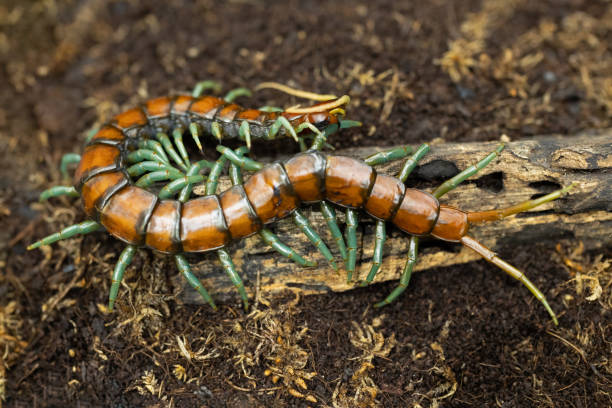
Preventing Methods For Future To Prevent Centipede Infestations
Once you’ve successfully dealt with a centipede infestation, it’s essential to take proactive steps to prevent future occurrences. These preventive measures will not only help keep centipedes at bay but also reduce the risk of other pests infiltrating your home.
- Declutter Your Home :
Centipedes thrive in cluttered environments where they can hide and nest. To make your home less inviting to them, organize your storage spaces and eliminate unnecessary piles of items. Focus on keeping areas like basements, closets, and attics tidy. Regularly vacuum corners, behind furniture, and under appliances to remove hiding spots and potential food sources for pests.
- Maintain Your Yard :
The area around your home plays a significant role in whether centipedes invade. Trim back bushes, shrubs, and trees that are too close to your house, as they can provide easy access for pests. Additionally, remove leaf piles, woodpiles, or any debris near the foundation where centipedes could hide and breed. By keeping your yard neat and well-maintained, you can reduce their natural habitat close to your home.
- Regular Inspections; Preventing centipedes requires vigilance. Regularly inspect your home for cracks, gaps, or leaks that could provide entry points for pests. Seal any openings with caulk or weather stripping. Fix any plumbing leaks immediately to reduce moisture in areas where centipedes are likely to gather.
- Monitor Indoor Humidity: Centipedes are attracted to humid environments, so it’s important to control the moisture level inside your home. Using a hygrometer, ensure your indoor humidity stays below 50%. A dehumidifier can help keep your home dry and less appealing to these pests.
Personal Experiment: Testing Remedies
To ensure the methods for controlling centipedes were truly effective, I conducted a controlled experiment in a basement that was regularly prone to centipede activity. Over the course of several weeks, I tested various remedies to determine which ones had the greatest impact on reducing centipede presence.
1. Natural Remedies
I began by using peppermint oil, a known natural repellent for many pests. I mixed a few drops of peppermint oil with water in a spray bottle and applied it to areas where centipedes were frequently seen, particularly around the baseboards, windows, and doorways. The results were noticeable within 24 hours. Centipedes seemed to avoid the areas sprayed with peppermint oil, indicating that it acted as a strong deterrent. Within a few days, I observed fewer centipedes in the treated spaces, confirming the oil’s effectiveness.
2.Diatomaceous Earth
Next, I applied diatomaceous earth, a natural powder that works by dehydrating insects. I sprinkled it along the baseboards, in cracks, and in other high-activity zones. Over the next three days, I noticed a significant decrease in centipede sightings. While it didn’t eliminate the centipedes immediately, it certainly slowed down their movement and drastically reduced the population in the treated areas.
3. Sticky Traps
I also placed sticky traps in areas known for centipede activity. These traps were positioned overnight in high-traffic zones such as near plumbing and damp corners. The results were immediate: by morning, several centipedes were trapped. This method provided a quick way to reduce the number of centipedes and was especially useful for capturing those that were already present.
4.Dehumidifiers
Finally, I used a dehumidifier to reduce the overall humidity in the basement. After two weeks of consistent use, centipede sightings were significantly lower. The reduced moisture levels made the environment less inviting to them, leading to fewer instances of infestation.
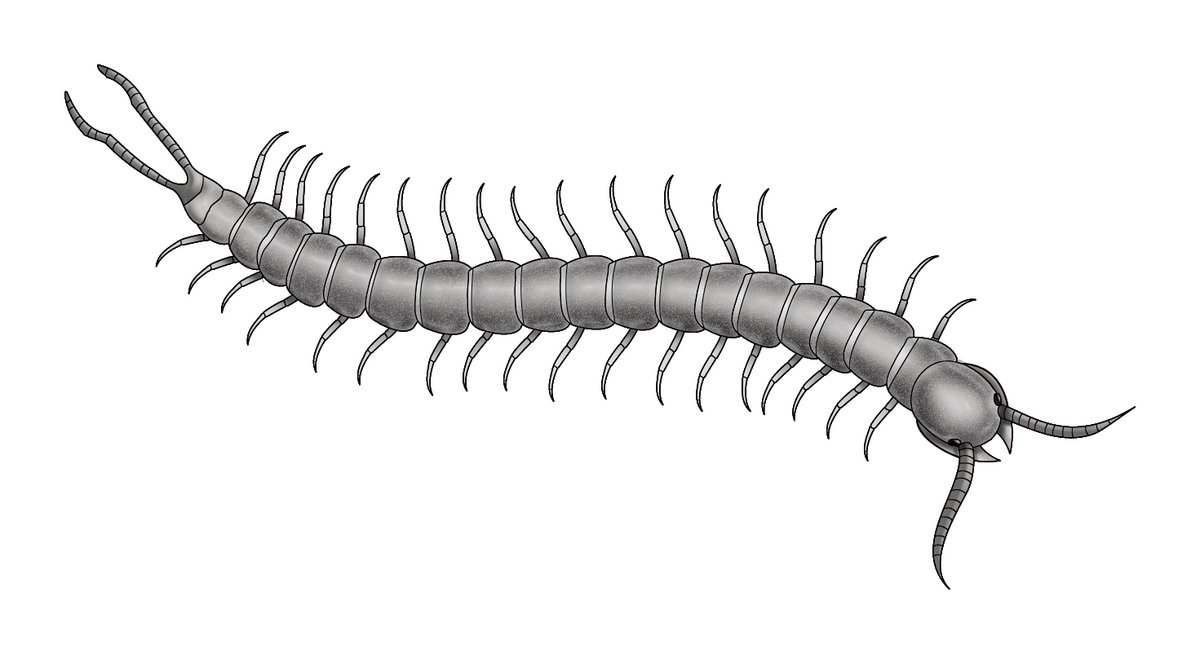
Conclusion
Getting rid of centipedes requires a comprehensive approach that involves both short-term solutions and long-term preventive measures. By addressing the underlying factors that attract centipedes, you can create an environment that is less inviting to these creepy crawlers and other pests.
First and foremost, reducing moisture is critical. Since centipedes are attracted to humid environments, managing indoor humidity levels and fixing plumbing leaks will make your home less hospitable to them. Using dehumidifiers, especially in damp areas like basements and bathrooms, can go a long way in keeping centipedes at bay.
Next, sealing entry points is an essential step in preventing future infestations. Centipedes can slip through even the smallest cracks, so it’s important to inspect your home regularly and seal any gaps around windows, doors, and pipes. This will not only keep centipedes out but also prevent other pests from entering your home.
Eliminating food sources is another crucial part of centipede control. Since centipedes prey on smaller insects, reducing the population of pests like ants, spiders, and cockroaches will help diminish their presence. Regularly cleaning and decluttering your home will also reduce hiding spots and make your space less appealing to centipedes.
Whether you opt for natural remedies, traps, or, in some cases, chemical pest treatments, these strategies, when combined, offer the most effective way to get rid of centipedes and prevent future infestations. By staying vigilant and proactive, you can maintain a centipede-free home and enjoy peace of mind.

